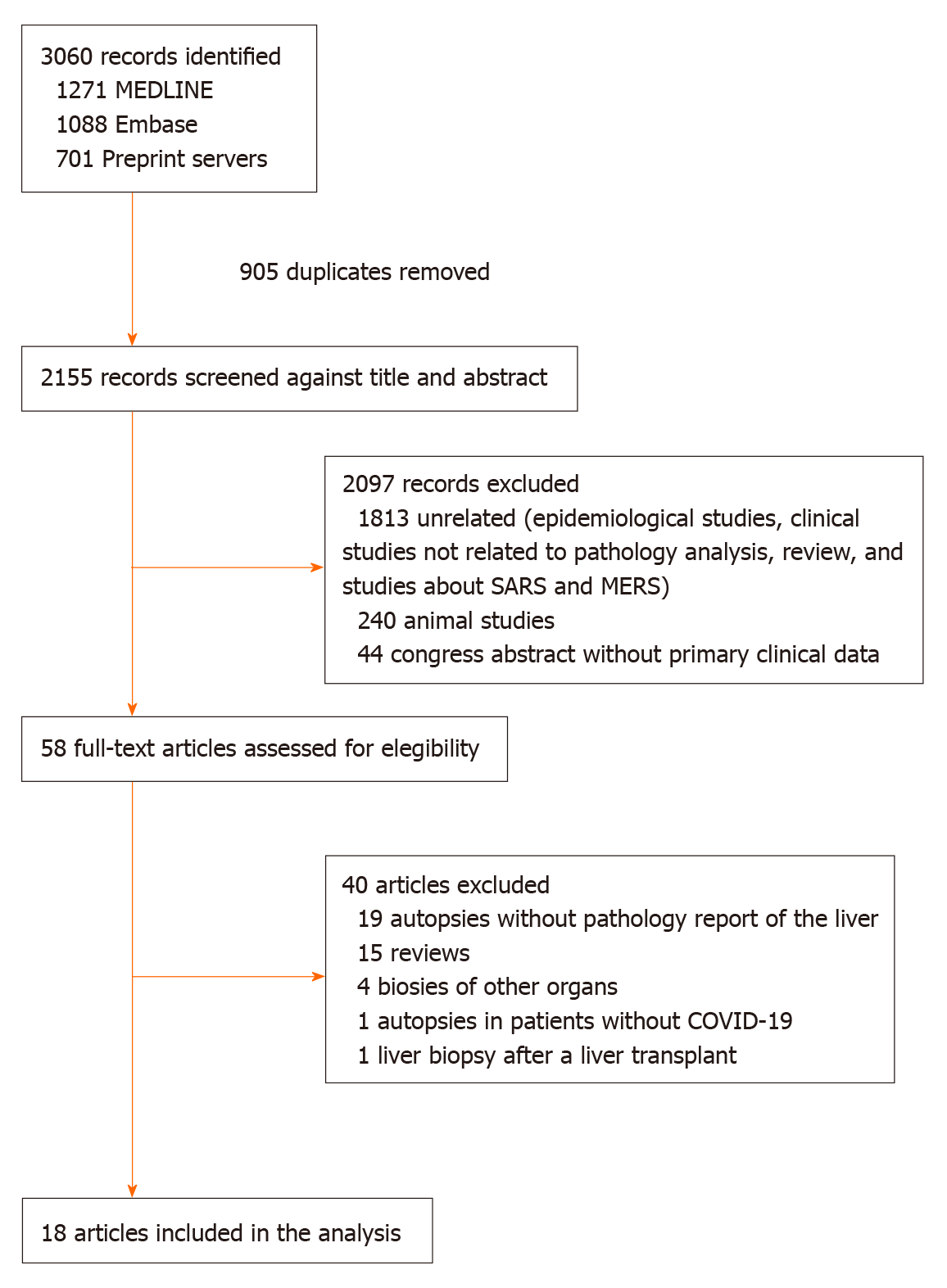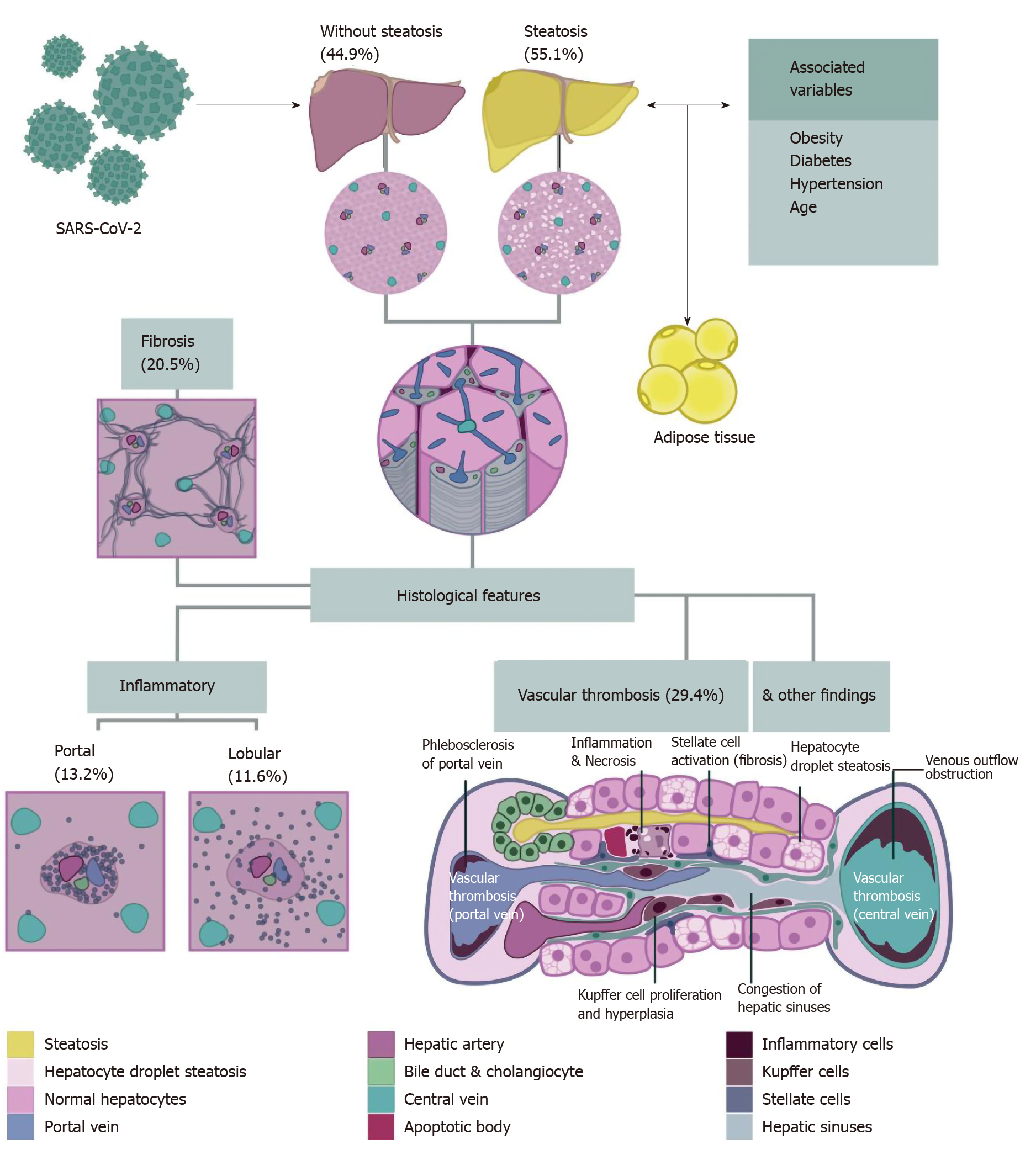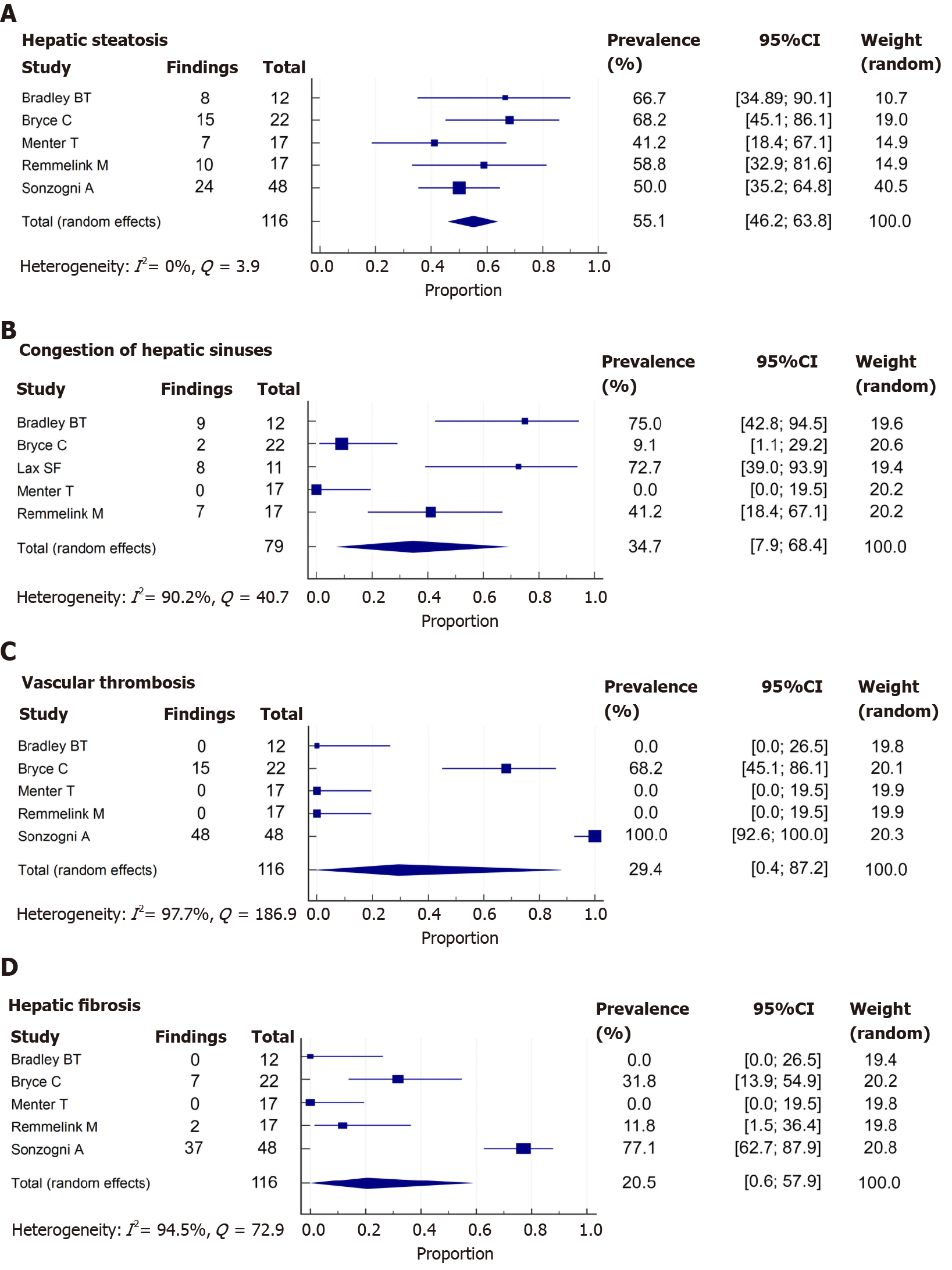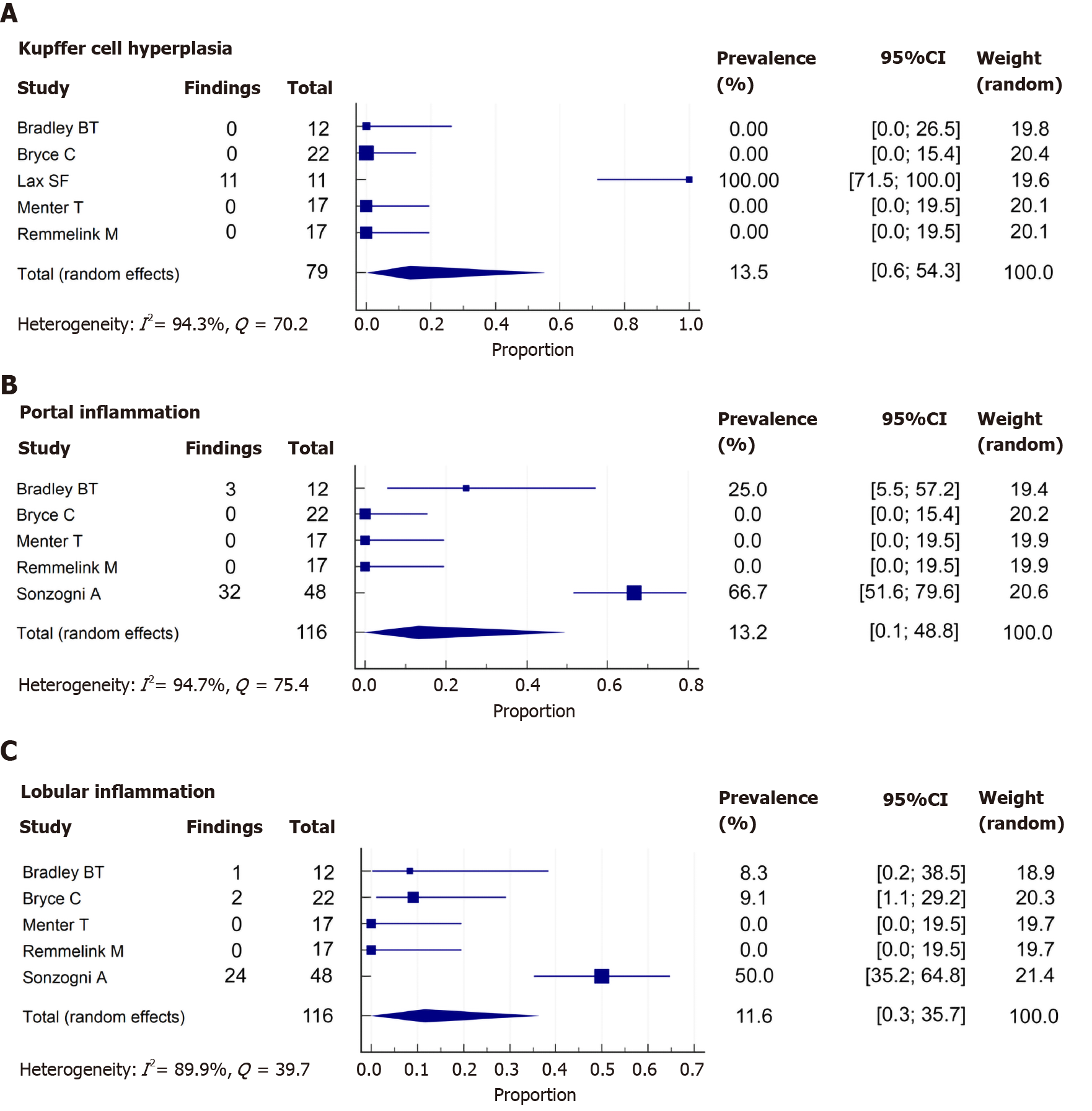Copyright
©The Author(s) 2020.
World J Gastroenterol. Dec 28, 2020; 26(48): 7693-7706
Published online Dec 28, 2020. doi: 10.3748/wjg.v26.i48.7693
Published online Dec 28, 2020. doi: 10.3748/wjg.v26.i48.7693
Figure 1 Study selection for the systematic review.
Figure 2 Major liver histological features observed in 6 studies (n = 116 autopsies from deceased coronavirus disease 2019 patients).
Steatosis was the most frequent finding (55.1%). Studies also reported congestion of hepatic sinuses (34.6%), vascular thrombosis (29.4%), fibrosis (20.5%), Kupffer cell hyperplasia (13.5%), portal inflammation (13.2%), and lobular inflammation (11.6%), Other findings observed were venous outflow obstruction, phlebosclerosis of the portal vein, herniated portal vein, periportal abnormal vessels, hemophagocytosis, and necrosis.
Figure 3 Forest plots of major liver histological features from deceased coronavirus disease 2019 patients.
A-D: The figure includes forest plots of hepatic steatosis (A), congestion of hepatic sinuses (B), vascular thrombosis (C), and fibrosis (D). Heterogeneity was assessed using I2 and Q statistics. CI: Confidence interval.
Figure 4 Forest plots of inflammatory liver histological features from deceased coronavirus disease 2019 patients.
A-C: The figure includes forest plots of Kupffer cell hyperplasia (A), portal inflammation (B), and lobular inflammation (C). Heterogeneity was assessed using I2 and Q statistics. CI: Confidence interval.
- Citation: Díaz LA, Idalsoaga F, Cannistra M, Candia R, Cabrera D, Barrera F, Soza A, Graham R, Riquelme A, Arrese M, Leise MD, Arab JP. High prevalence of hepatic steatosis and vascular thrombosis in COVID-19: A systematic review and meta-analysis of autopsy data. World J Gastroenterol 2020; 26(48): 7693-7706
- URL: https://www.wjgnet.com/1007-9327/full/v26/i48/7693.htm
- DOI: https://dx.doi.org/10.3748/wjg.v26.i48.7693
















